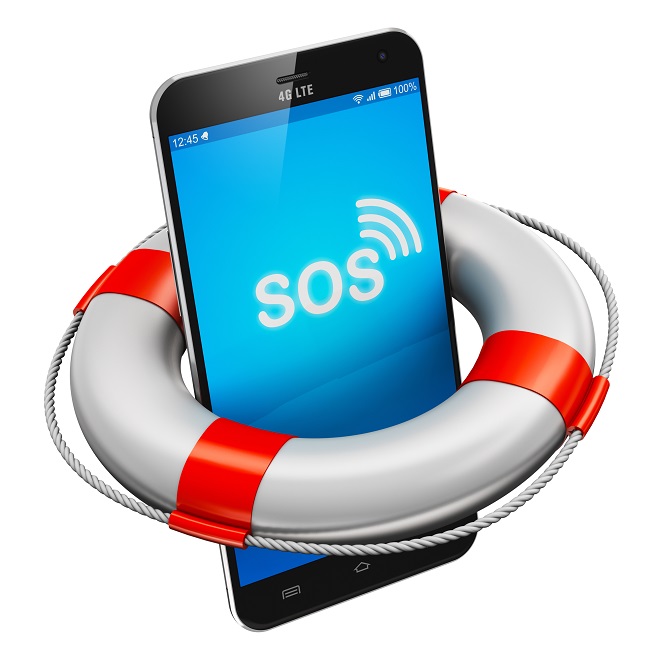
By Ed Dubens, CEO/Founder of eDriving
November 3, 2022
Up to 50 million collisions occur each year***, often leaving drivers stranded, or worse yet, unconscious, and unable to call for help. As enterprise driver safety and risk management solutions increasingly leverage technology to reduce employee risk while driving for work purposes, we are seeing an increasing number of smartphone-based collision detection, personal SOS, and emergency response service solutions being launched across the globe.
Both consumer and commercial worlds have important use cases for mobile phone-based crash detection which intersect at the point where a driver is unconscious at the side of the road with no witnesses to call for help, for example, after falling asleep at the wheel! In addition, commercial use cases need the ability to detect low-speed, as well as high-speed events and seamlessly connect with roadside assistance, accident, claims and fleet management partners, as well as in-house insurance and risk management systems.
 Most recently, Apple announced their 1st gen crash detection service on their latest smartphones (15.6% of global market share) that detects high-speed, high-severity impacts and then calls first responders (911) with a pre-recorded message. While the Apple solution and many like it offer a valuable layer of protection for the public, they will likely fall short for business customers whose employees are driving many hundreds of miles every week for work purposes.
Most recently, Apple announced their 1st gen crash detection service on their latest smartphones (15.6% of global market share) that detects high-speed, high-severity impacts and then calls first responders (911) with a pre-recorded message. While the Apple solution and many like it offer a valuable layer of protection for the public, they will likely fall short for business customers whose employees are driving many hundreds of miles every week for work purposes.
What features can we expect from smartphone solutions?
Crash/Collision Detection uses smartphone sensors and artificial intelligence (AI) to detect incidents and collisions.
Emergency Response, triggered automatically after a crash is detected, this will “robocall” emergency call centers to respond and/or connect an emergency support specialist (“human intelligence”) to contact drivers directly to determine if they need emergency assistance at the scene. In the best solutions, if a driver fails to respond to the call, the support specialist will assume the worst and initiate an emergency response. Prompt response is critical, as noted by The World Health Organization (WHO): “The way in which those injured in road crashes are dealt with following a crash crucially determines their chances and the quality of survival.*” Additionally, WHO states that “effective care of the injured requires a series of time-sensitive actions, beginning with activation of the emergency care system…**”
Personal SOS is the personal safety feature, allowing drivers to initiate contact with emergency support personnel whenever they feel unwell or concerned their personal safety is threatened, whether in or out of the vehicle.
Are smartphone-based emergency response solutions needed for employees driving for work?
 ABSOLUTELY! In-vehicle systems are just that – in vehicle only, and quite often have considerable subscriptions attached to them, and are not available in all markets worldwide. Smartphone-based solutions offer the full feature set with the added flexibility of following the driver should they be sharing or rotating vehicles.
ABSOLUTELY! In-vehicle systems are just that – in vehicle only, and quite often have considerable subscriptions attached to them, and are not available in all markets worldwide. Smartphone-based solutions offer the full feature set with the added flexibility of following the driver should they be sharing or rotating vehicles.
What did eDriving look for when evaluating solutions?
Many global solutions, in our opinion, are inadequate for the task of saving lives or sustaining economic models, in part because of the large number of false positives they produce. A poor crash detection system can mistake a dropped or tossed phone for a crash. Even very competent algorithms frequently misread forceful braking and cornering, as well as merely moving the phone, as crashes. The problems are magnified at lower speeds, where the thresholds become more complex when adjusting the algorithm’s sensitivity. This is one of the reasons why there are so few systems on the market that claim detection in lower-speed ranges even though 70% of all vehicle claims are low-speed-related!
To solve the need for low-speed collision detection and for drivers to receive live help in the event of an emergency in or out of their vehicle, eDriving partnered with Sfara & Bosch to provide a smartphone-integrated solution in 50 countries globally.
Critical factors that led to our decision included:
1. Using powerful AI, Sfara’s collision detection technology has been painstakingly developed to detect “ultra-low-speed” events down to 10 mph/16 kph. In many circumstances, these low-energy events do not pose an injury risk, but they do account for most mishaps, which enterprises must diminish in order to realize maximum program potential.
2. Sfara’s technology has a high degree of precision resulting from over ten years and more than 3,000 collisions processed from field and sled testing, as well as client operations – equivalent to 840 million miles of observed driving! Some of the world’s most respected automobile, insurance, and safety businesses have rigorously tested and confirmed the solution.
3. In the event of an emergency, Sfara’s technology will seamlessly connect drivers with Bosch’s professionally qualified emergency response specialists in 50 countries to organize a proportional response, even as the situation evolves.
4. Bosch protects over 20 million vehicles and their drivers with its global emergency management services platform. Live support for drivers both ensures that delays in delivering emergency support are mitigated, while protecting emergency services from getting spammed with false positives from less precise systems.
How you use these amazing services is as important as having them. eDriving recommends that drivers:
• Keep their phone in a cradle while their vehicle is moving at all times – false positives, as well as missed collision events, can be greatly reduced by taking this step. Devices that are in purses, bags, glove compartments, or on seats cannot accurately read event data.
• Fill out emergency profiles, including family members and colleagues to be contacted in the event of an emergency.
Don’t forget – the best thing about smartphone-based Emergency Response Systems is knowing they are there and, hopefully, never having to use them!
Safe driving.
** – fc.eps (who.int)
*** – [i] World Health Organization: Road traffic injuries (who.int)




